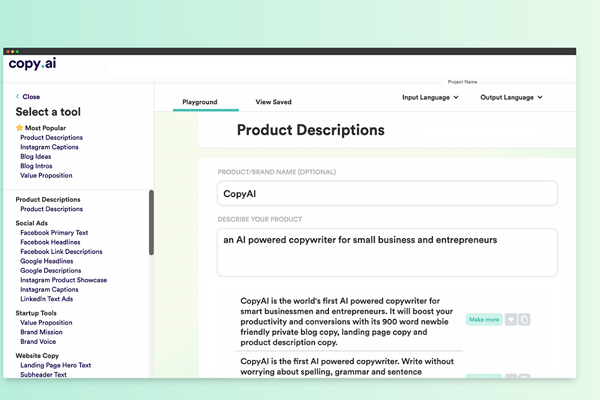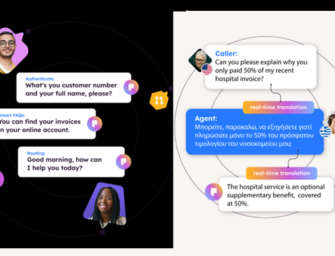GPT-3-Powered Business Writing Assistant Copy.AI Raises $2.9M
 Enterprise writing assistant startup Copy.ai has raised $2.9 million in a seed funding round led by Craft Ventures as first revealed in a TechCrunch report. The startup uses artificial intelligence built on the powerful GPT-3 language model from OpenAI to help businesses write a growing variety of texts including advertisements, product descriptions, social media posts, among others.
Enterprise writing assistant startup Copy.ai has raised $2.9 million in a seed funding round led by Craft Ventures as first revealed in a TechCrunch report. The startup uses artificial intelligence built on the powerful GPT-3 language model from OpenAI to help businesses write a growing variety of texts including advertisements, product descriptions, social media posts, among others.
Ghost Writer
The early-stage startup is also notable for publicly sharing its user numbers, monthly revenue, feature additions, and even Twitter impressions and new follower numbers via co-founder Paul Yacoubian’s Twitter. Yacoubian also includes his own new follower count in the update. According to the latest update, the company has had 30,000 sign-ups and has $53,600 monthly recurring revenue, a 56% and 46% rise month over month, respectively. The 60 tools offered by Copy.ai, including eight new ones added in February, have been used to generate 5.3 million pieces of writing, of which 68,000 are reported as saved.
That’s not bad for a company founded only last year when Yacoubian and co-founder Chris Lu started using GPT-3 on Twitter to generate ideas for company slogans. Monetizing the slogan-maker led to deciding to apply the AI to other writing projects. Now, users can pull up the different tools, enter in the short descriptions and keywords, and the AI model will start offering text of approximately the right length and style. It’s not just one suggestion either, the model produces several potential results. Admittedly, what’s produced definitely needs some editing at the very least, but it can at least hint at a good direction and it’s easy to see Copy.ai as a kind of virtual brainstorming partner.
Copy.ai Explains Voicebot
To test Copy.ai, we tried the blog-post writing skill to see how it would explain Voicebot.ai. For a blog headline What is Voicebot.ai, we entered a brief and limited description of “News, commentary, and research on voice technology and AI.” About 15 seconds later, Copy.ai offered eight short paragraphs as options, with the option to make more. Some didn’t make much sense, and others were just boring, but a few were actually quite good as starting points.
“Voicebot is your source for news, commentary, and research on voice technology, AI, and chatbots. We are on a mission to advance the world’s understanding of conversational artificial intelligence,” though generic, is pretty accurate and even offers a related term in conversational AI. Then there was, “Whether you’re dreaming about a Jetsons-esque future or are just trying to get your phone to talk to you on the drive home, voice technology is on the rise. Voicebot.ai is dedicated to providing commentary, analysis, and news coverage of voice technology, AI and chatbots.” As a demonstration of what GPT’s 175 billion parameters can do, that’s not bad at all.
Though Microsoft exclusively licensed GPT-3 from OpenAI to use with the Azure platform for customers, the GPT-3 API is still available to apply to develop, which tens of thousands have already done. It’s started supporting all kinds of AI products like the ‘virtual beings’ produced by Fable Studios and the creations of AI Dungeon-maker Latitude. Copy.ai and the others suggest those who were very excited about GPT-3’s potential have yet to be proven wrong about its future impact on the AI industry.
Follow @voicebotai Follow @erichschwartz
Microsoft Scores Exclusive License to the Much-Hyped GPT-3 Language Model
Fable Studio Introduces ‘Virtual Beings’ Ready to Converse With You
Microsoft Adds New Speech Styles and ‘Lyrical’ Emotion to Azure AI Toolkit








